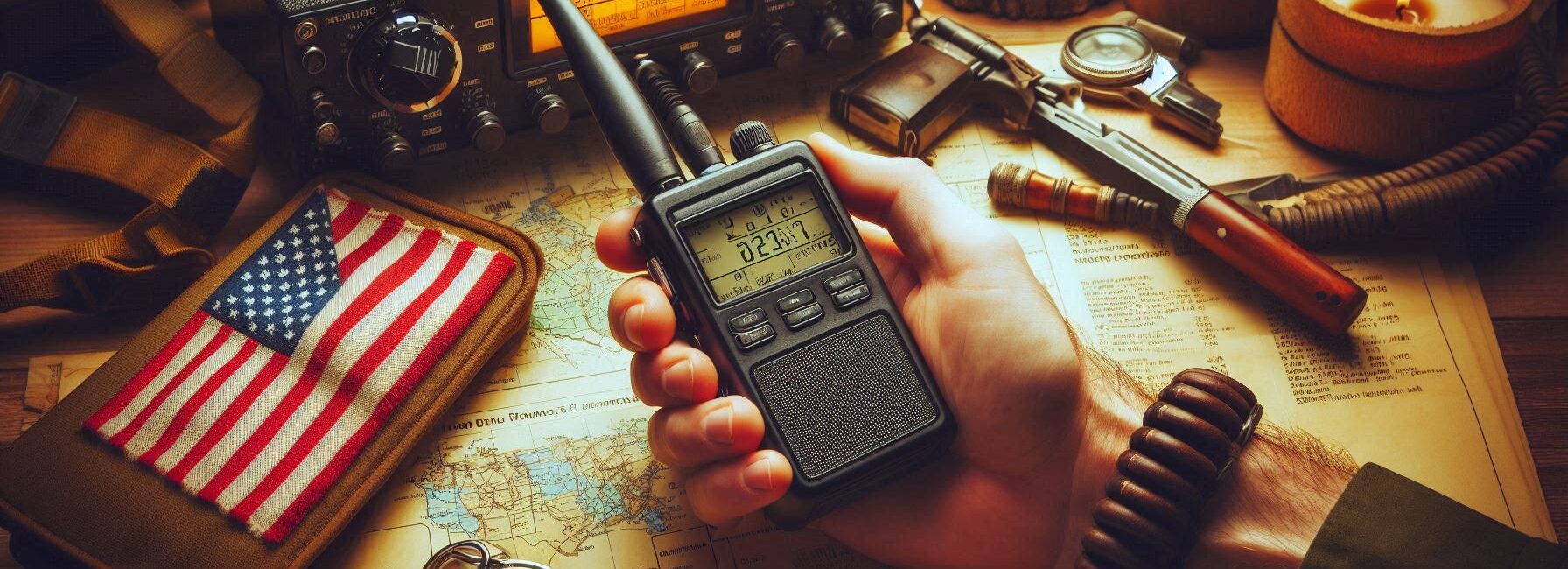Please Note: This post may contain affiliate links. If you click one of them, we may receive a commission at no extra cost to you. As an Amazon Associate, I earn from qualifying purchases.
Last Updated on October 19, 2025 by Kevin Collier
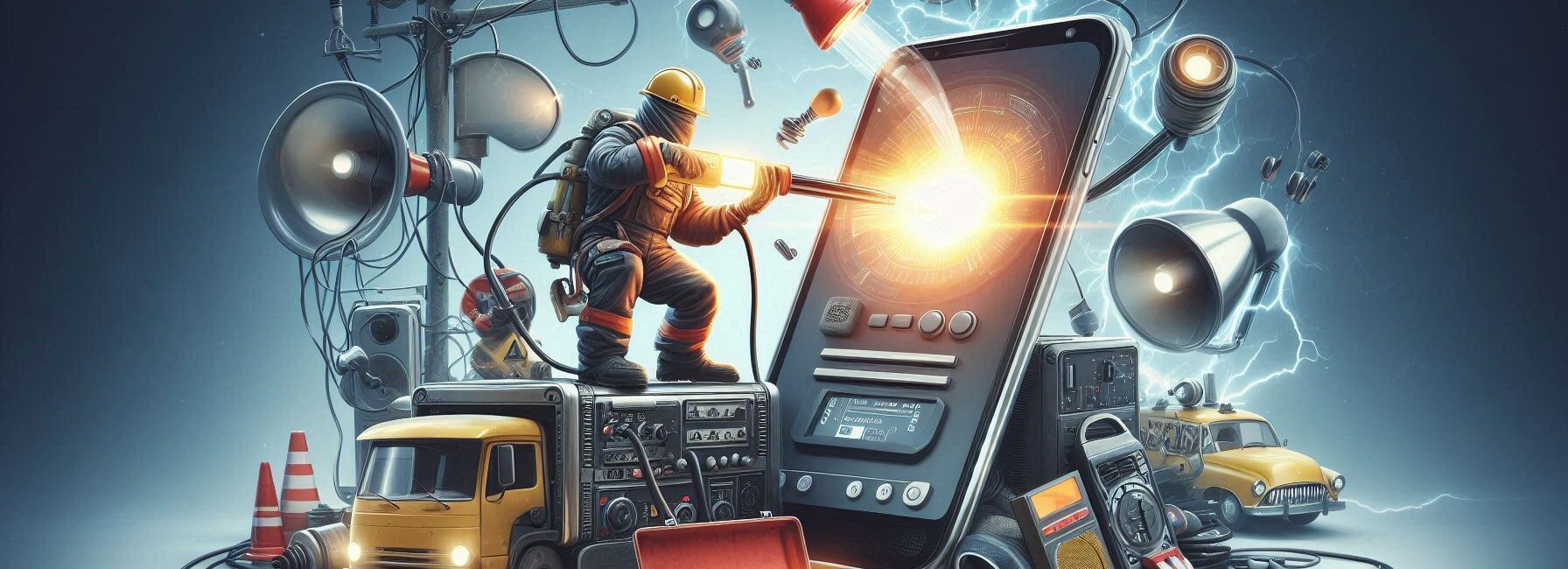
Top Takeaways and Key Concepts
- Use a Portable Power Station: Opt for solar-powered models to keep devices charged during blackouts.
- Employ Hand-Crank or Solar Radios: These radios function without electricity, providing reliable emergency communication.
- Utilize Car Chargers: Keep a car charger handy to power devices when at home.
- Maintain Spare Batteries: Always have extra batteries for essential devices like flashlights and radios.
- Establish a Communication Plan: Set up predetermined check-in times and alternative contact methods.
Imagine this: you’re in your cozy living room, right? It’s pitch black because of a blackout. Candles are flickering everywhere, smelling like… well, let’s be honest, they smell like “desperate attempts at ambiance.” Classic, right?
But here’s the thing. You start thinking about your phone or tablet. Those little lifesavers that keep you connected. What do you do when they’re running out of battery? Panic mode, right? Nope! Take a breath.
You can totally keep those gadgets alive. It’s all about being a little creative and having a plan.
First, think about flashlights. If you have rechargeable ones, you can use them until the power comes back. Some have USB ports, which means you can charge your phone with them. Pretty neat!
Got any batteries lying around? Pop those into any gadgets that need them. A portable charger is a lifesaver, too. If you have one, keep it handy. Recharge it whenever the power is back on.
Solar chargers are fun, too! They soak up sunshine during the day and give your devices a boost at night when the power's out. Just set it outside for a bit.
And don’t forget about your car! If the power’s out for too long, you can use your car’s charger to give that phone some juice. Just be careful, okay? Don’t run the engine inside the garage.
Staying in touch can help make a blackout easier to deal with. You can check on your loved ones or look at a hilarious meme or two to take your mind off things.
So, the next time you're alone in the dark, remember that you have choices. You won't be left in the dark—literally—if you plan ahead and use your imagination. And who knows, maybe those candles will make the place feel cold after all.
*** Shop for Survival Gear - Tools - Kits ***
Survival Gear - Bags and Backpacks - Knives - Boots/Footwear - Communication
Outdoor Cooking - Gloves - Hydration - Dry Boxes - Water Filtration Systems
Tents - Sleeping Bags - First Aid Kits - Multi-Tools - Flashlights - Fire Starters
Navigation - Survival Food - Night Vision - Headlamps - Stun Guns - Binoculars
Understanding Power Needs
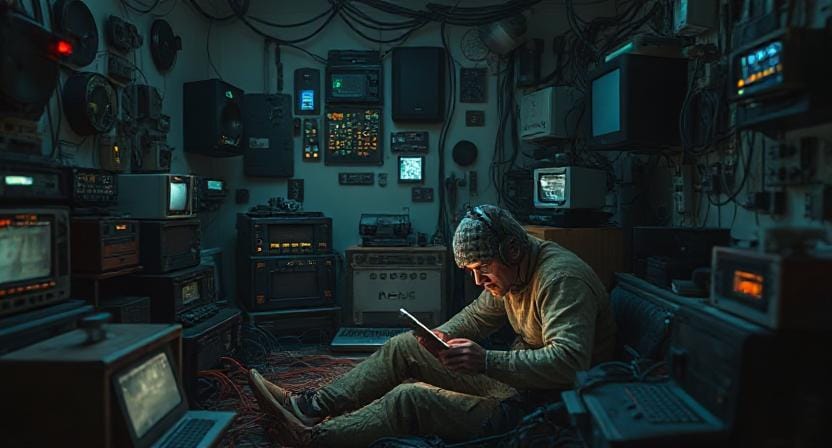
Let's speak about what we need to charge before we get into the details of how to do it. It's like trying to figure out how many marshmallows you need for s'mores: too few and it's sad, too many and you might regret your life choices.
1. Know Your Devices: First, make a list of the objects that need to be charged. Is it just your phone? Or do you have a tablet, a laptop, and maybe even an old flip phone from 2005 that still works? Knowing which devices are important will help you decide how to use your energy.
2. Battery Capacity: Every gadget has its own battery capacity, which is measured in milliamp hours (mAh). My smartphone, for instance, has enough power to go through two seasons of my favorite show—if I don't watch cat videos every five minutes! Knowing these capabilities helps you figure out how long each device can run on backup power.
3. Energy Use: Some devices use electricity like they're at a classy café, while others drink it like they just ran a marathon. Laptops use more power than phones or tablets in most cases. So if you're attempting to convey important messages while viewing cat videos, you might want to think about which one is more important!
Backup Power Choices
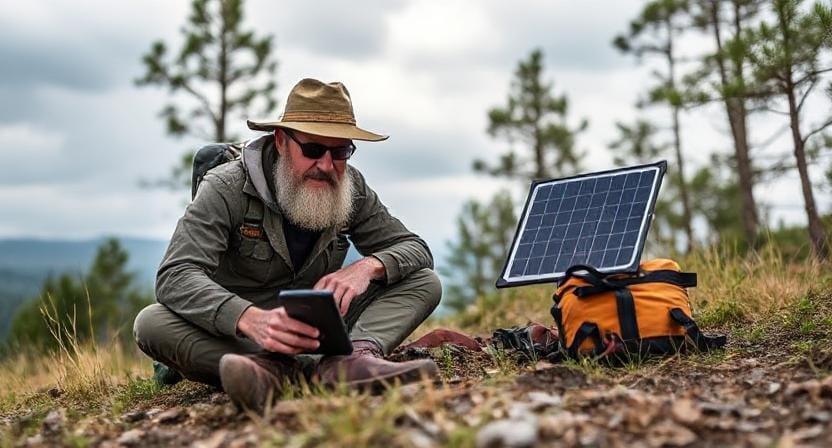
Now that we know how much electricity we need, let's look at strategies to keep those devices running when it gets dark, like a blanket fort that is too big for its own good.
1. Portable chargers: These small things are lifesavers! They come in all sizes and capacities, from small ones that fit in your pocket to bigger ones that could certainly start a car (but don't try). Just make sure they're fully charged before the lights go out, or they'll be as handy as a teapot made of chocolate.
2. Solar chargers: If you want something that is good for the environment and makes you feel like a superhero in the great outdoors, think about getting solar chargers. They function best when it's sunny, so prepare ahead unless you live in Seattle, where sunshine is just a rumor!
3. Generators that you turn by hand: Let's see… Should I charge my phone or work out? I can accomplish both with hand-crank generators! Sure, cranking may feel like performing hard work for free, but hey, it's better than sitting about in the dark with nothing but candlelight and existential dread.
Making a Charging Station
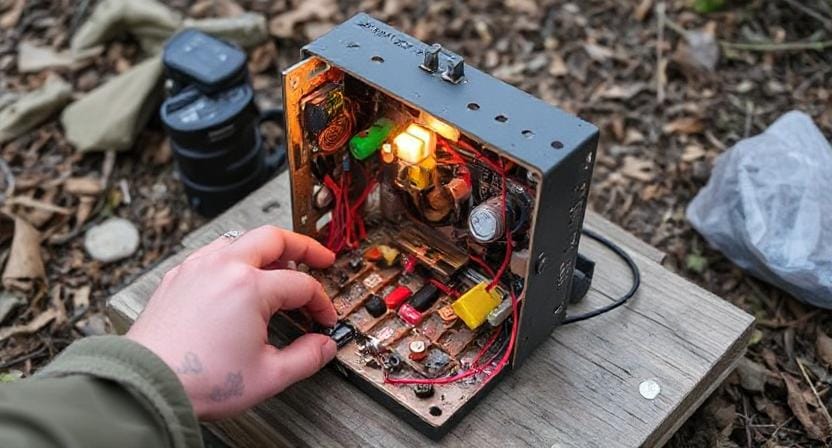
Now that you have all your backup power alternatives, it's time to set up your charging station, which is like a command center for all electrical wonders!
1. Choose a Place: Pick a place that is easy to get to but safe from things that could go wrong, such pets or kids who think everything looks good. A table near a window is a good idea because natural light may make people feel better, especially if there are cookies on the table!
2. Get your cords in order: No one ever said, “I'm ready” like having cables all over the place. You won't have to spend half an hour untangling wires in an emergency if you use cable ties or baskets to keep them orderly.
3. Put labels on everything. Trust me on this one: when things are crazy outside your door, labels make things easier. Write down which charger goes with which device so that even tired zombies can figure it out without any problems.
Staying Up to Date Without Power
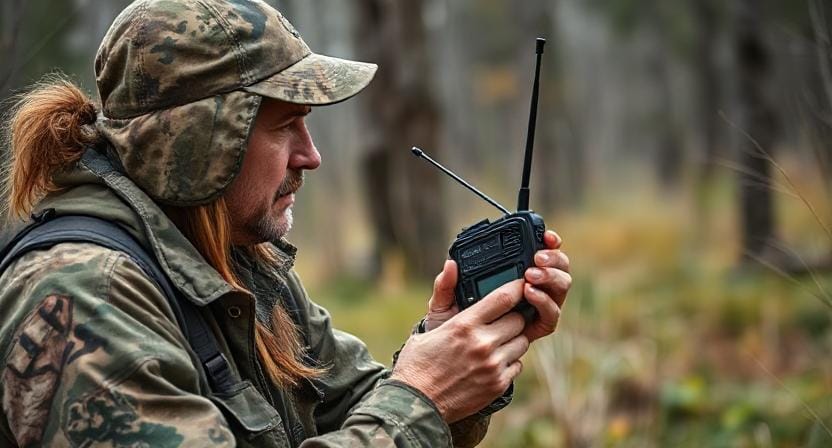
Now that our devices are charged, how do we stay up to date? After all, knowing what's going on outside could mean the difference between being happy to be alive or freaking out because you missed pizza delivery night!
1. Battery-Powered Radios: A classic solution that will always be in style! You don't need Wi-Fi or cell connection to get news updates on battery-powered radios. This is great for receiving weather alerts while enjoying the sounds of nature (or avoiding them).
2. Emergency Services applications: If you have enough battery left after charging everything else and are lucky enough to have a signal, you can download emergency services applications ahead of time to get real-time notifications and information about local incidents.
3. Community Communication Groups: Getting to know your neighbors means being able to help each other out when things become rough, even if it means sending smoke signals or carrier pigeons! Make group chats ahead of time so everyone knows how to talk to each other when regular ways don't work.
Getting Ready Ahead of Time
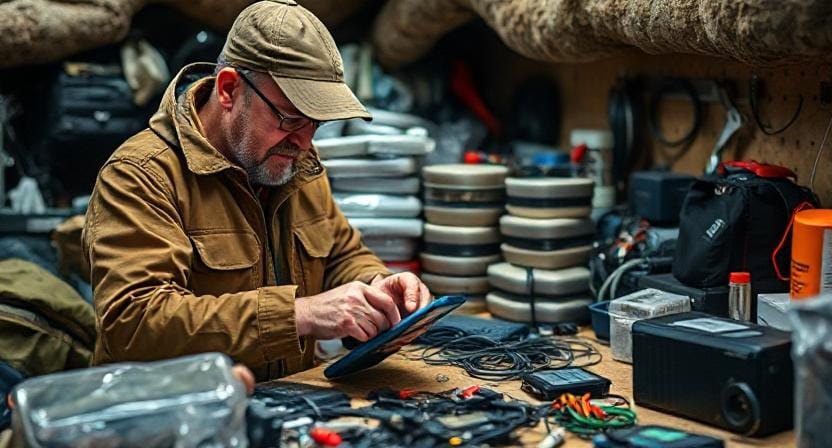
Okay then! The most important thing to remember is to be ready, because no one wants their phones to die faster than their hopes at family game night!
1. Check your supplies often: Make it a habit to check your batteries every few months and make sure your portable chargers are ready to go instead of collecting dust next to old food in the cabinet!
2. Practice Makes Perfect: Have practice runs when everyone pretends to be in a blackout so they know exactly what to do if reality hits harder than planned. This is a lot like practicing dance skills before prom night, but it's not as embarrassing!
3. Be flexible and open to change: Finally, and this can't be said enough, be open to change! Flexibility is key to succeed in any situation, especially when things are uncertain. This is because different situations may call for different tactics depending on the resources available.
It's a good idea to set up some simple systems before the power goes off. Imagine that you already have a little area set aside for all of your emergency supplies. All of your flashlights, batteries, and portable chargers are neatly stored in one location. Very useful when the lights go off!
Knowing where to get your gear when it becomes dark can make a big difference. You won't have to look all over the home for that misplaced sock if you have those things available. You will feel calm, maybe even like a superhero, and ready to take on the night.
Doesn't it feel good to stay in touch? You can text your buddies, read the news, or at least watch cute animal videos. Those tiny things can truly help you relax. You won't feel utterly lost in the dark.
You won't feel as panicked if you follow these basic measures. You will have a plan. And that's a big deal! It's like knowing what to do when there's a scary thunderstorm. A warm drink, a soft blanket, and excellent companionship may make a big difference.
So, if something unexpected happens, simply remember that you have your things ready and you're not alone. You can do it, one candle at a time. Also, those times might become joyful memories instead of just panic. You can do it!
Suggested Resources:
How To Prepare for a Blackout
https://www.ready.gov/blackouts
The Ultimate Guide To Emergency Preparedness
https://www.emergency.com/guide
Solar Charging Solutions
https://www.solarpowerworldonline.com/solar-charging-guide

Kevin Collier is a seasoned survivalist and expert in prepping and homesteading, contributing to WiseSurvive.com. With a deep-rooted passion for self-sufficiency and outdoor survival skills, Kevin shares practical advice, strategies, and resources to help individuals prepare for any challenge. His informative articles cover a range of topics, from essential survival techniques to sustainable living practices, empowering readers to thrive in any situation. Whether you're a novice or a seasoned prepper, Kevin's insights will inspire you to take charge of your readiness and build resilience for the future.

